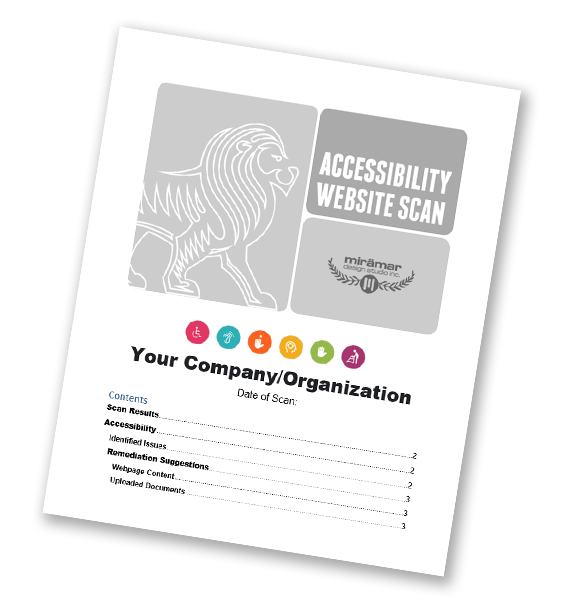website accessibility
important yet overlooked
Can every user of your site find the information they need and are you compliant with Web Accessibility legislation?
Legislation requires many websites to be accessible, with a focus on Government and Organizations/Businesses with 50+ employees. For example, in Ontario your site and its content must follow the Web Content Accessibility Guidelines (WCAG 2.0) as required by the Accessibility for Ontarians with Disabilities Act (AODA).
The goal is to make web content more accessible to people who have disabilities. This may include improving contrast of colours for readability or using proper tags that will allow links, text, images and other media forms to be effectively described to a user. Web development that is accessible also benefits those that you might not think it is intended for such as any person who has a hard time reading flashy text with funky colours.
We have extensive experience in making accessible websites and we tend to work with WCAG 2.0 Level AAA while other developers/designers may stick with the bare minimum they can get away with, assuming they are even knowledgeable about accessibility requirements.
contact us today about a new responsive and accessible website!
WCAG 2.0 Quick Reference List
- Text Alternatives: Provide text alternatives for any non-text content so that it can be changed into other forms people need, such as large print, braille, speech, symbols or simpler language.
- Time-based Media: Provide alternatives for time-based media.
- Adaptable: Create content that can be presented in different ways (for example simpler layout) without losing information or structure.
- Distinguishable: Make it easier for users to see and hear content including separating foreground from background.
- Keyboard Accessible: Make all functionality available from a keyboard.
- Enough Time: Provide users enough time to read and use content.
- Seizures: Do not design content in a way that is known to cause seizures.
- Navigable: Provide ways to help users navigate, find content, and determine where they are.
- Readable: Make text content readable and understandable.
- Predictable: Make Web pages appear and operate in predictable ways.
- Input Assistance: Help users avoid and correct mistakes.
- Compatible: Maximize compatibility with current and future user agents, including assistive technologies.
WCAG 2.0 Resources:
- WCAG 2.0 Resource: Understanding WCAG 2.0
- WCAG 2.0 Resource: How People with Disabilities Use the Web
- WCAG 2.0 Resource: Planning and Implementing Web Accessibility
- WCAG 2.0 Resource: Designing for Inclusion
- WCAG 2.0 Resource: Overview of Accessibility Evaluation Resources
